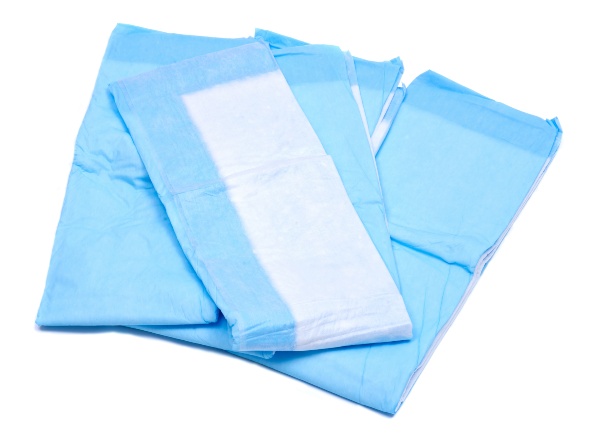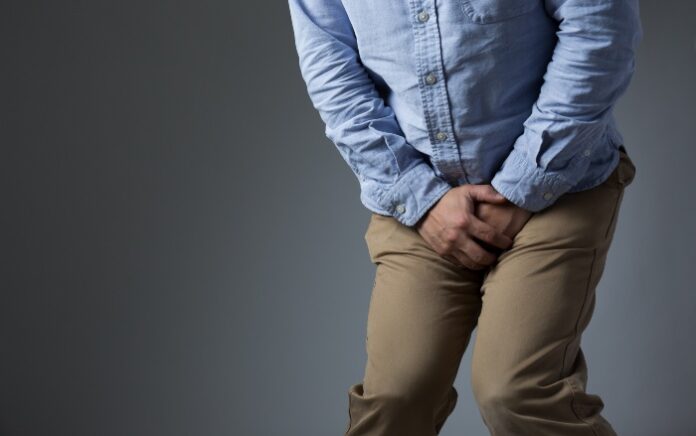Refreshing jogs in the morning and laughter-filled drinks with your friends at night may be all the ingredients you need for a perfect day. If, however, you bounce a little too hard on your walk or laugh a little too loud at the bar, your bladder may decide to join in on the fun too. This involuntarily loss of urine is referred to as “incontinence” (there’s bowel incontinence too). While it can occasionally make for a good laugh, more often than not, it’s an uncomfortable, inconvenient, and sometimes embarrassing condition that negatively impacts the lives of 25 million American adults. (1)
Incontinence generally occurs due to weakened pelvic floor muscles resulting from age, illness, or physical trauma such as childbirth or disability. Cognitive impairment may also be the culprit if the need for relieving oneself isn’t being properly communicated through nerve signals.
If you suffer from a form of incontinence and find it hard to cope, the following are some of the options people use to manage the condition:
- Wearing pads/adult diapers
Similar to feminine hygiene products, incontinence-specific pads are designed to absorb moisture and prevent it from leaking out. There are various shapes and sizes available depending on your individual needs. It’s key, however, to follow the recommended changing times as some may need to be changed every three to four hours, while others are designed to last for longer periods.
Some types include:
- Pantiliners
- Guards
- Booster pads
- All-in-one
2. Specially-made underwear
Similar to absorbent pads, there is also incontinence underwear on the market. In comparison to disposable pads/diapers, specially-made underwear is usually reusable, machine-washable and leak-proof.
3. Maintain a healthy weight
It’s been suggested that those who are overweight are at more at risk of incontinence due to additional pressure weighing on the bladder. The United Kingdom’s National Health Service even revealed that by losing weight, your symptoms could potentially disappear. (2)
It’s recommended to aim for a lower body mass index (BMI) if additional weight or obesity not only affect your ability to carry out daily tasks but also your bladder control. According to a clinical trial reviewing the effect of weight loss on urinary incontinence, published by the U.S. National Institutes of Health’s National Library of Medicine, each five-point BMI increase was linked to an approximate 20% to 70% increase in incontinence risk. It’s wise, therefore, to understand what a healthy body weight is for you, and to try to maintain one. (3)
4. Manageable clothing
For those with physical or cognitive impairment, tight, uneasily opened clothing may be inappropriate when suffering from incontinence. Ensuring your clothing is optimized for any urgent incidents of the leaky nature, may benefit you. This may involve wearing looser, stretchy fabrics (track pants) or clothing with Velcro fasteners, rather than zippers.
5. Bladder training
According to the American College of Physicians, bladder training for those who suffer from incontinence may prove beneficial. Sufferers tend to urinate more frequently to avoid disaster, however, in doing so, they can actually worsen the problem and train the bladder to hold less urine, resulting in a very sensitive and reactive system. Re-training the bladder muscles to hold more, and reduce the frequency of urination, may help in managing the condition. (4)
This form of behavioral therapy may be achieved by scheduling bathroom breaks and/or delaying urination if possible.

6. Pelvic floor exercises
Like the majority of body parts, exercising can help strengthen the muscles. Seeing as how incontinence relates to a concerning level of muscle weakness, exercising the pelvic region is considered an important factor in the management and potential treatment of incontinence.
According to the Mayo Clinic, if you perform Kegel exercises consistently, you may see a notable decrease in unexpected urination after a few weeks to a few months. These exercises generally consist of tightening and then releasing the muscles for specific periods of time. (5)
7. High-fiber diet
If you’ve been tempted to add more fiber to your diet, bowel incontinence could be another convincing reason to do so. According to the Simon Foundation for Continence, fiber can ease symptoms by absorbing additional water and thickening stool. It may also aid in easing constipation. (6)
If you’re suffering from incontinence, remember that it’s never too late to see whether healthy dietary habits will help.
8. Limit alcohol and caffeine
It may not come as a surprise that alcohol and caffeine have been linked to incontinence in both men and women. Reducing these impactful beverages may reduce the frequency and urgency of your condition.
Final thoughts
Incontinence isn’t enjoyable to deal with, however, if you adopt some of the above techniques, you may be able to better cope with it. If symptoms persist, or if you’re unsure of how to tackle the condition, it’s always wise to visit your doctor for further guidance.
References:
- “The aging population and incontinence”, Source: https://www.medline.com/media/mkt/pdf/press-kits/Adult-incontinence-market-fact-sheet.pdf;ecomsessionid=ndG0TtnBVTFvV1jLEix6WyxEobEyk3whVtID1C3P.OCR5-b2b?_requestid=104462
- “10 ways to stop leaks”, Source: https://www.nhs.uk/conditions/urinary-incontinence/10-ways-to-stop-leaks/
- “Obesity and Urinary Incontinence: Epidemiology and Clinical Research Update”, Source: https://www.ncbi.nlm.nih.gov/pmc/articles/PMC2866035/
- “Nonsurgical Management of Urinary Incontinence in Women: A Clinical Practice Guideline From the American College of Physicians”, Source: https://www.acpjournals.org/doi/10.7326/M13-2410
- “Kegel exercises: A how-to guide for women”, Source: https://www.mayoclinic.org/healthy-lifestyle/womens-health/in-depth/kegel-exercises/art-20045283
- “Fiber Therapy for Bowel Incontinence”, Source: https://simonfoundation.org/fiber-therapy-bowel-incontinence/

